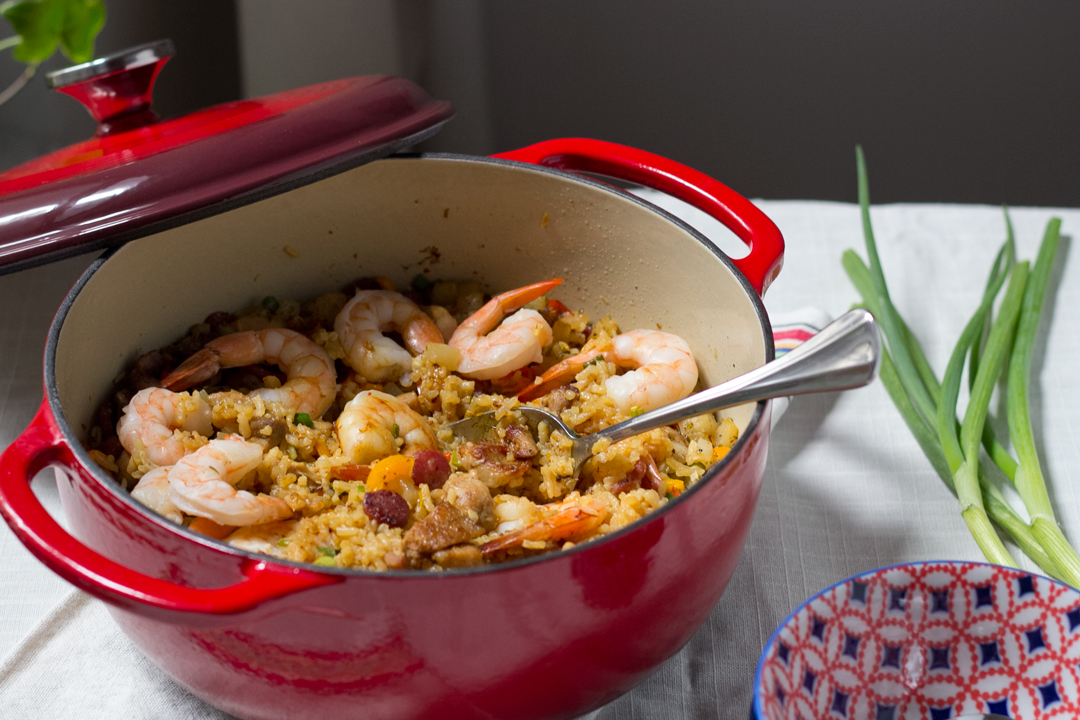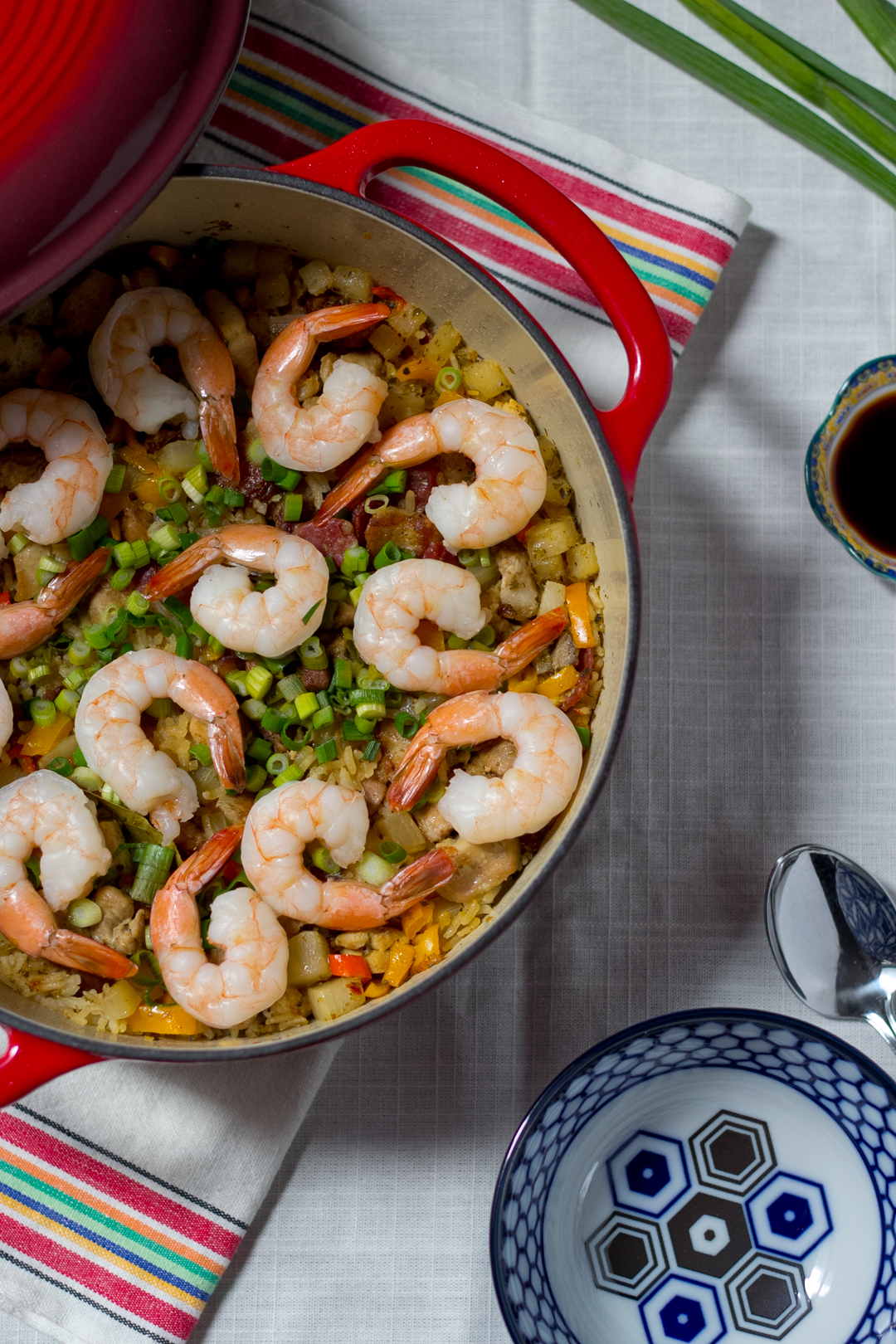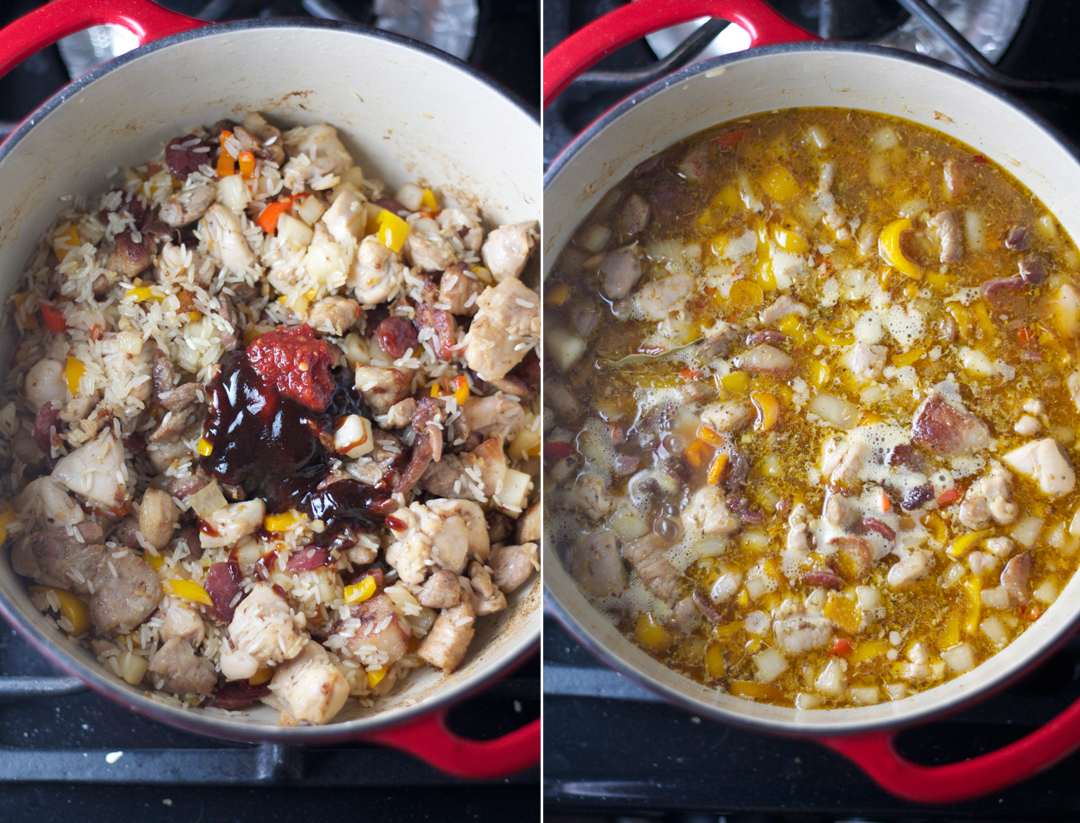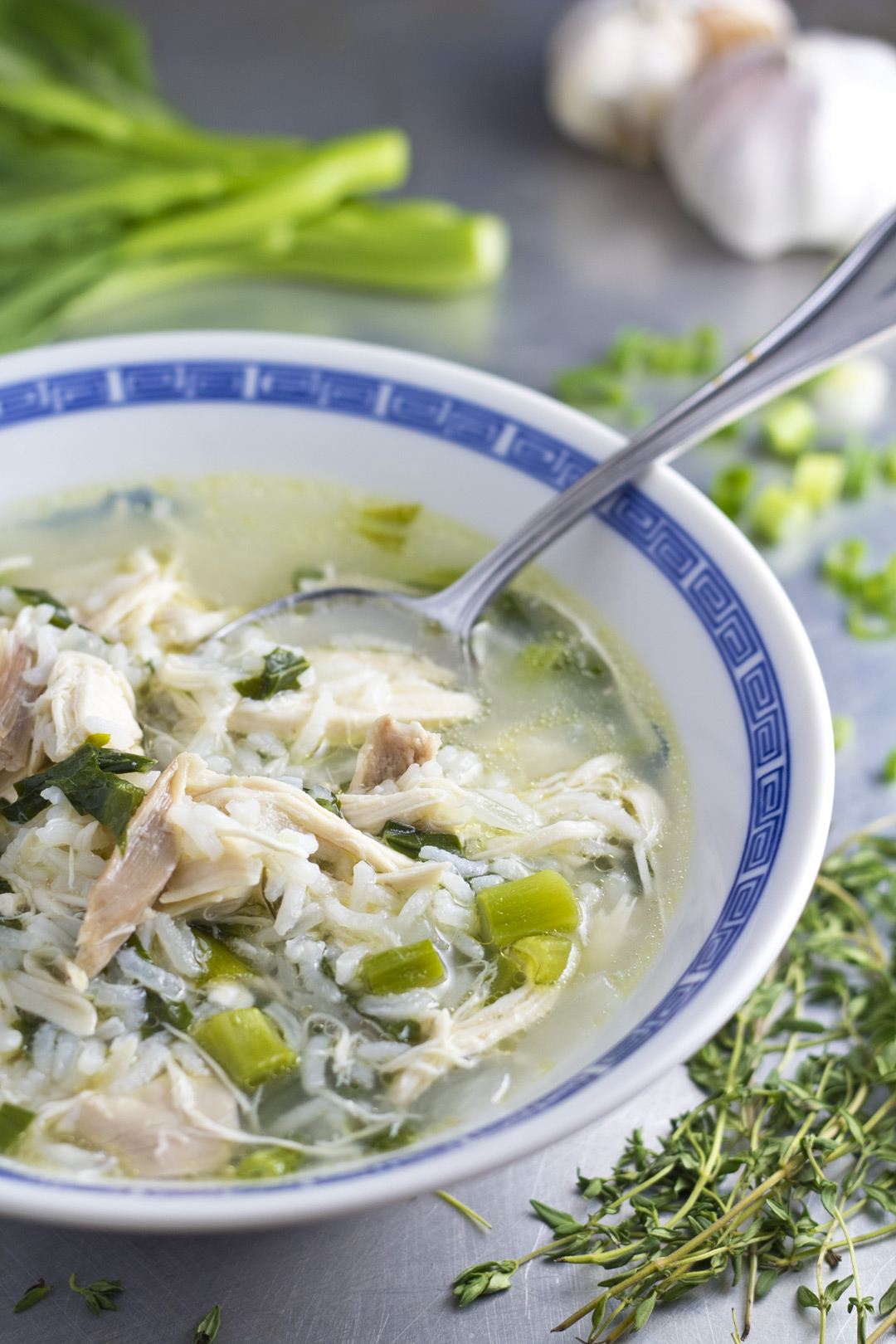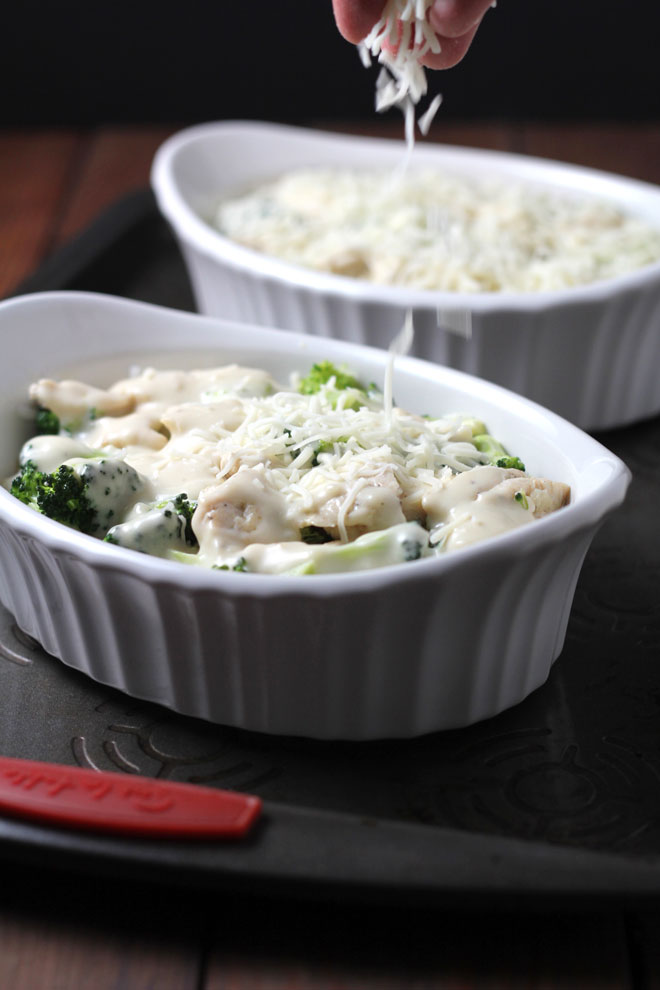A few months ago, I joined a Facebook group called Food Bloggers Central founded by the amazing Nagi of RecipeTin Eats and Megan of Culinary Hill. I was blown away by how supportive the bloggers are to one another. Food blogging is often a one-man team and having someone (or a group of like-minded people) who will have your back, when you're trying to figure out how to do the million things that's usually required to maintain a food blog, just helps a ton.
I had already befriended Nagi a while back before joining the group (I interviewed her just last year for my blog series Meet My Inspiration) So when she approached me about being a member of Food Bloggers Central, I immediately said yes.
Fast forward to last month, Nagi had initiated this project called Food Blog Hop. The idea is that each blogger who's interested in the project would be matched with two other bloggers, and we would basically cook each other's recipe.
Then maybe a week later, Nagi being her awesome ambitious self posted a spreedsheet of the big list of bloggers, and who each blogger was matched with. What a task! Bravo, Nagi! I quickly went down the list, and found my name next to Neli of Delicious Meets Healthy. I didn't know Neli before so I starting poking around her blog and spotted something I've been wanting to try - Jambalaya.
If you've been following my posts, you probably have noticed my growing love for Southern cuisine ever since I watched the first episode of A Chef's Life. I mean, I did go after Vivian's chicken and rice, and cooked it back to back for two weekends. Would I take a trip down to North Carolina and eat at Vivian Howard's restaurant, Chef & the Farmer? HECK YEAH, in a heartbeat I would. Did you know that A Chef's Life was just nominated for multiple James Beard Awards? I just love what Vivian is doing and the awesome stories that she's been sharing. It's so inspirational to me. My desire to learn about food and culture has been growing faster than I can keep up, and then when I saw Neli's jambalaya, my light bulb bursted into a shower of meat, vegetables, and rice (insert imagination).
Jambalaya reminds me a lot of Hong Kong style clay pot rice. Clay pot rice is such an iconic Hong Kong winter dish. When I was in the Kong 2 weeks ago, I was thrilled when Emily (who I met on Instagram and spent the day hiking the Dragon's Back with) suggested that we'd get clay pot rice for dinner in Yau Ma Tei.
And it was amazing.
I love the similarities between Jambalaya and clay pot rice. Both have meat and vegetables cooked in one pot, and it's so rich and savory, it will just shoot you to the moon and back.
So without having much knowledge about this iconic Southern dish, I went off to find out all kinds of things about the Jambalaya.
Jambalaya is a Louisianan dish that has a lot of French and Spanish influences, and it's made differently depending on the region you're in. Many debate over rather the jambalaya was evolved from the Spanish paella or French Jamalaia, or perhaps both given the region's cultural history with Spanish and French settlers in the 18th Century.
Jambalaya is a lovely and rich stew that has four main ingredients: meats, vegetables, stock, and rice. The most common version is probably the red jambalaya, also known as the Creole jambalaya which is referred to as "city food". Creole jambalaya is more popular near New Orleans, on the Eastern part of Louisiana. The other kind of jambalaya is the brown jambalaya, also known as Cajun jambalaya which is referred to as "country food". And Cajun jambalaya is commonly found in Western and Central Louisiana.
So how the heck do you tell between a Creole and a Cajun jambalaya? The main difference is the use of tomatoes in the Creole jambalaya. And Cajun jambalaya is known as brown jambalaya because of the natural camelization of sugar in meats and veggies in the browning process, and it later gets incorporated into the stock.
After giving both styles some thoughts, I chose to do a Cajun jambalaya over the Creole jambalaya. The Cajun culture and their history reminds me a lot of my Hakka roots. Cajun food is rustic country food that is generally very well seasoned which shares a lot of common ground with Hakka cuisine. Based on the typical Cajun jambalaya recipes, I switched out some things like onion and smoked sausage with Chinese turnip (lor bak) and Chinese sausage (lap Cheong). I also added five-spiced pork belly, fresh ginger, hoisin sauce, garlic chili sauce, and scallion to kick this Chinese-inspired jambalaya into high gear.
I was ecstatic with this Chinese-inspired Jambalaya that's totally comforting with a touch of my Chinese heritage.
Chinese-inspired Jambalaya
Prep time: 35 mins Cook time: 35 mins Total time: 1 hour 10 mins Serves: 5-6
Ingredients
- 1/2 lb skinless and boneless chicken thighs
- 1 tsp soy sauce
- 1/8 tsp white pepper powder
- 1/2 lb pork belly, skinless
- 1/4 tsp five spice powder
- 2oz Chinese sausage (lap cheong)
- 1 tbsp minced garlic
- 1 tsp minced ginger
- 1 cup diced Chinese turnip (lor bak), about 1/2" dices
- 1 cup diced bell peppers
- 1 1/2 cups long grain white rice
- 1 tbsp hoisin sauce
- 2 tsp garlic chili sauce
- 1 tsp dried thyme
- 1 tsp oregano
- 1 tsp garlic powder
- 3 bay leaves
- 3 cups chicken stock
- 1/2 lb medium or large shrimp, shelled and deveined
- 3 stalks chopped scallion
- 2 tbsp lemon juice
- 2 tbsp soy sauce
Instructions
- Slice pork belly diagonally into 1/4" thick slices. Marinate with five spice powder for 30 minutes.
- Cut chicken into 1/2" cubes. Marinate with soy sauce and white pepper powder.
- Slice Chinese sausage into 1/8" slices. Set aside.
- Mince garlic and ginger, and dice turnip into 1/2" cubes. And dice bell peppers.
- Place a Dutch oven over medium-high heat, drizzle about 2 tablespoons of oil, and twirl the pan a couple times to spread oil evenly. Add pork belly, stir several times until meat is browned and caramelized, about 3 minutes. Remove from pan. Add chicken, and cook until it's no longer pink on the outside, about 2. Remove from pan. Add Chinese sausage and let it cook for 2 minutes. Remove from pan.
- Turn the heat down to medium, stir in garlic and ginger, cook for 30 seconds. Add turnip and bell peppers, and let it cook for 3 minutes, stir frequently.
- Stir pork belly, chicken, and Chinese sausage back into the pot. Add rice and stir. Add hoisin sauce, garlic chili sauce, thyme, oregano, and garlic powder, and stir one more time until everything is mixed well together. Throw in the bay leaves, then add chicken stock. Give it a quick stir, and turn the heat up. Once it boils, return the heat to low, cover and let it cook for 15 minutes.
- Sprinkle chopped scallion, and lay the shrimp on top, then drizzle with the lemon juice. Cover and let it cook for another 5 minutes, until shrimp has turn completely pink.
- Drizzle 1 to 2 tablespoons of soy sauce, then serve hot.

